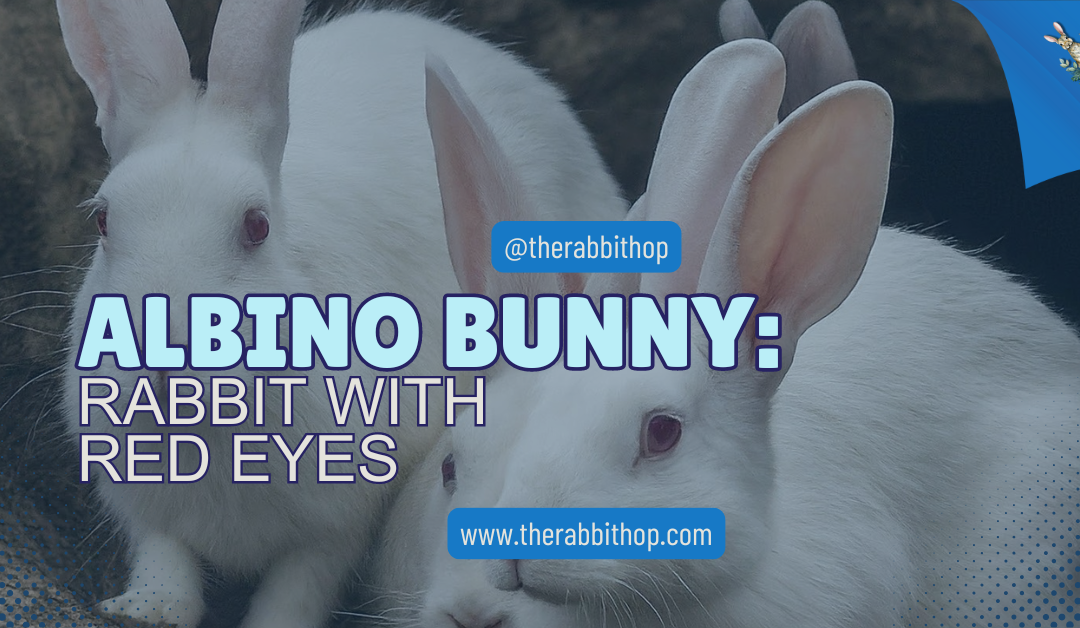Albino bunnies are captivating creatures, often recognized by their striking red eyes and pure white fur. Albino bunny owners know there’s more to these unique rabbits than just their appearance. Behind those ruby-red eyes lies a fascinating world of genetics, special care requirements, and intriguing behaviors that set them apart from other rabbits.
In this article, we’ll dive into what makes albino bunnies so special, from understanding their distinct traits to learning how to provide them with the best care. Whether you’re a rabbit enthusiast or just curious about these mesmerizing animals, you’ll discover everything you need to know about albino bunnies.
Albino Bunny, Rabbit With Red Eyes: Unique Genetic Phenomenon Explained
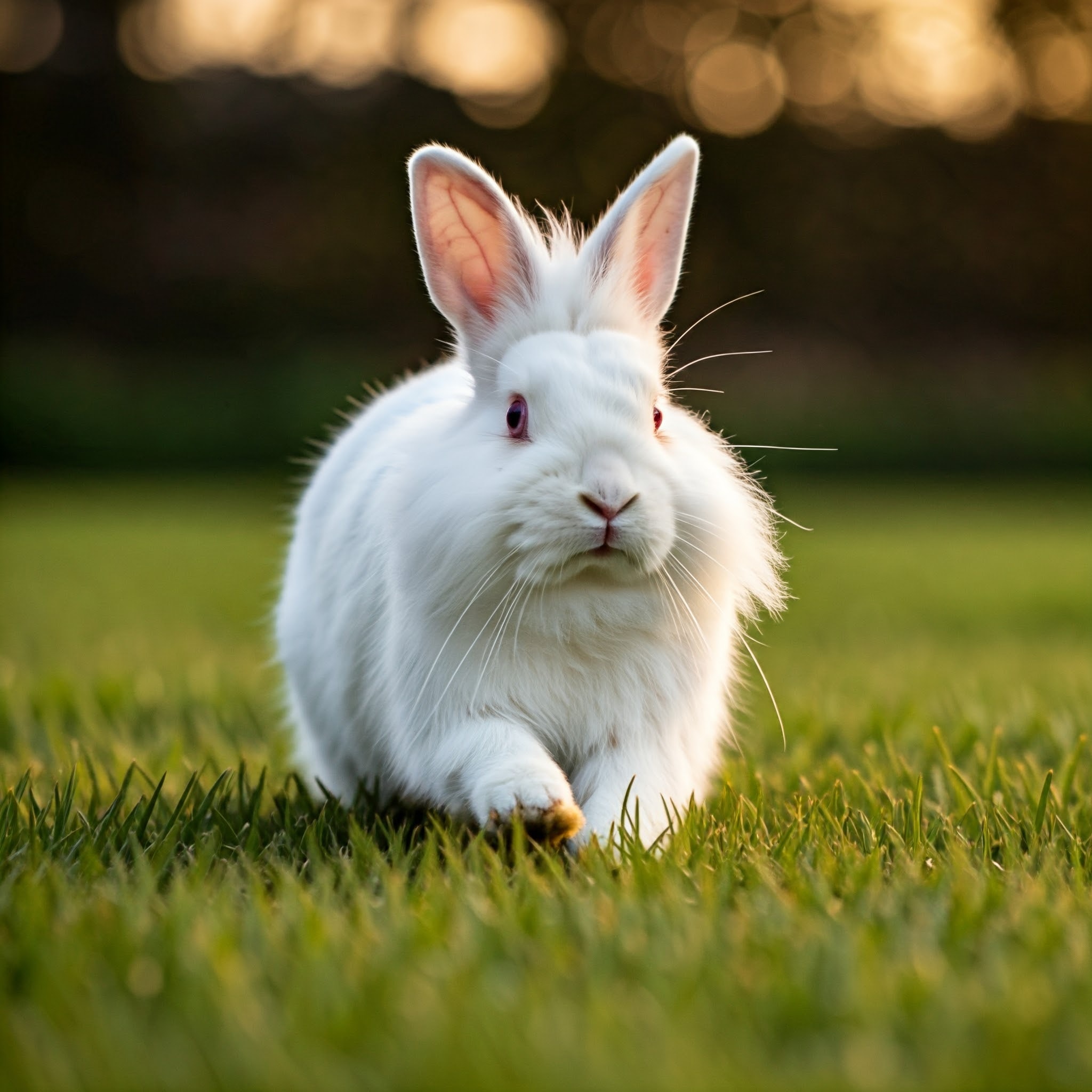
Albino bunnies are a unique and fascinating type of rabbit. These cute pets have white fur and red eyes due to a lack of pigment. Albino rabbits are born without melanin, which causes their distinct appearance. Albino bunnies need special care. Their red eyes are light-sensitive, so they need protection from bright sunlight.
Albino bunnies also have a higher risk of sunburn on their skin. Despite these challenges, Albino Bunny pets can thrive with proper care. Many people find albino bunnies interesting because of their striking looks. Their white fur and red eyes make them stand out from other rabbits. While they may look different, albino bunnies act just like other rabbits. They enjoy the same foods, toys, and activities as their colorful cousins.
Key Takeaways
- Albino rabbits have white fur and red eyes due to a lack of melanin.
- These bunnies need extra protection from sunlight and have some special care needs.
- Albino rabbits behave like other rabbits and can make great pets with proper care.
Understanding Albinism in Rabbits
Albino Bunny results from a genetic condition called albinism, which affects pigmentation. This condition causes unique physical traits and requires special care considerations.
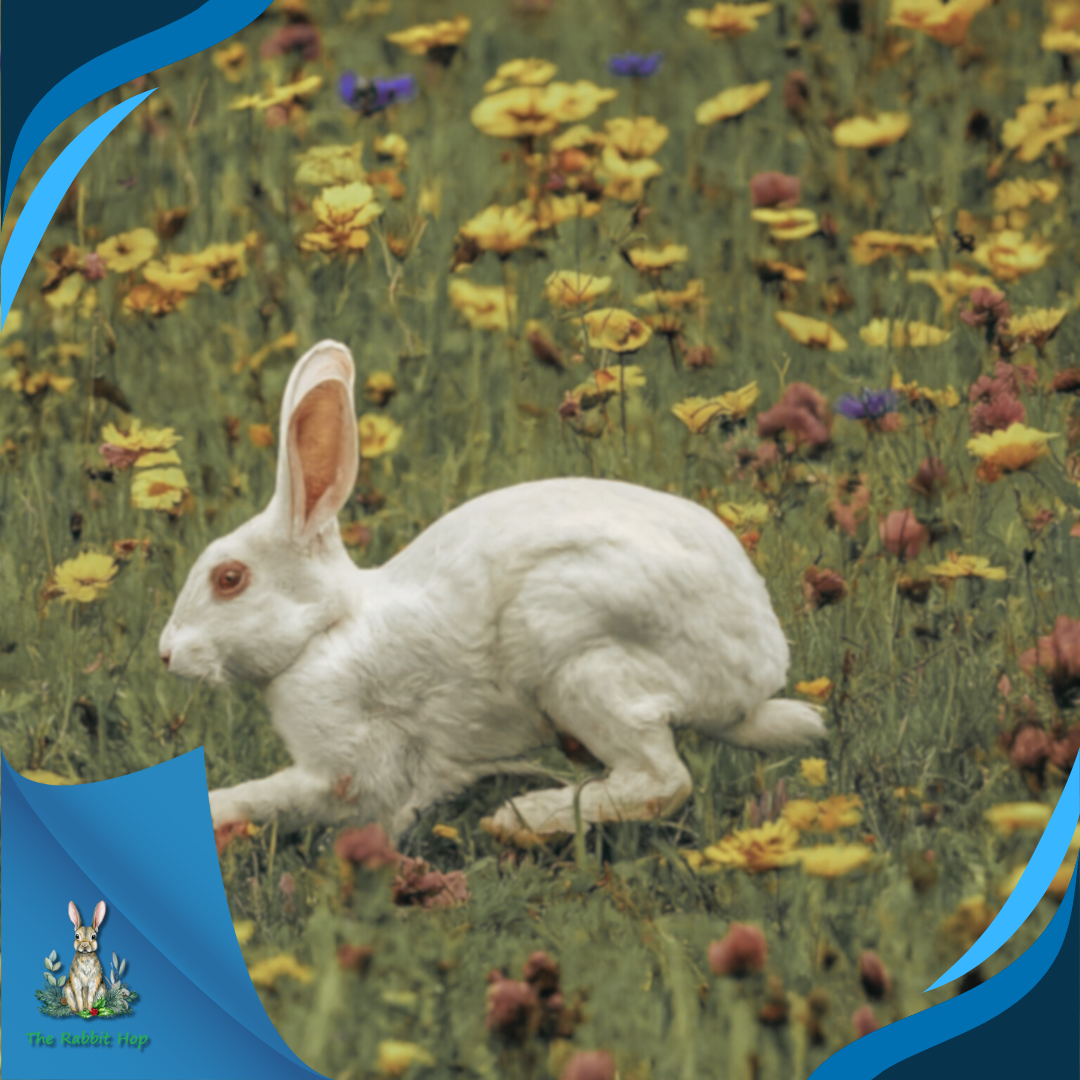
Genetics of Albinism
Albinism in rabbits is caused by a gene known as the “c gene.” This gene controls melanin production, which gives color to fur, skin, and eyes. When a rabbit inherits two copies of the albino gene, it results in a complete lack of pigment.
This is why albino rabbits have white fur and pink or red eyes. The albino gene is recessive. This means both parents must carry it for their offspring to be albino. If only one parent has the gene, their babies may be carriers but won’t show albino traits.
Characteristics of Albino Rabbits
Albino rabbits have distinct features that set them apart. Their most noticeable trait is their pure white fur. This lack of pigment extends to their skin, which appears pink. Their eyes are typically red or pink. This is because you can see the blood vessels in their eyes without pigment to cover them. Some albino rabbits may have blue eyes, depending on their genetic makeup.
Albino rabbits have normal vision but are often sensitive to bright light. You’ll need to protect them from long sun exposure. Their lack of pigment makes them more prone to sunburn and skin damage. Despite common myths, albino rabbits are just as healthy as other rabbits. Their unique appearance doesn’t affect their overall health or lifespan.
Health Considerations for Albino Rabbits
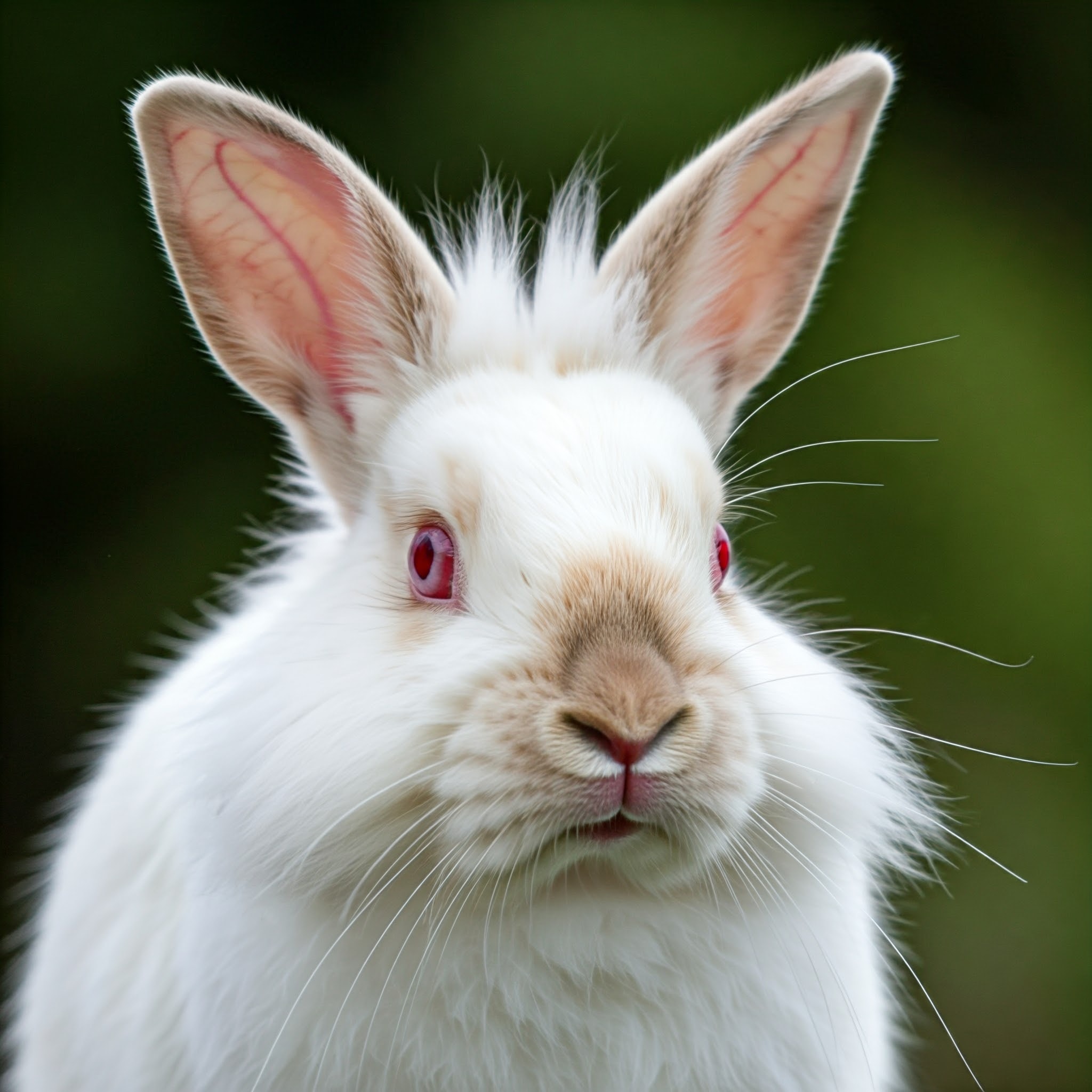
Albino bunnies need special care due to their unique traits. Their lack of pigment affects their eyes and skin, making them more prone to certain health issues. You should be aware of these challenges to keep your albino bunny healthy.
Sensitivity to Sunlight
Albino rabbits have very sensitive skin that burns easily. You need to limit their sun exposure. Keep them indoors or in shaded areas when outside. Use gentle, pet-safe sunscreen on exposed skin if needed. Watch for signs of sunburn, like redness or peeling.
Provide plenty of shade and cool spots in their living area. A UV-protective hutch cover can help when they’re outside. Overheating is also a risk. Ensure your albino rabbit can access fresh water and cool areas, especially on hot days.
Vision Challenges
Albino rabbits often have poor eyesight. Their red eyes are sensitive to bright light, making them shy or nervous in new situations. You can help by:
- Using soft, indirect lighting in their living space.
- Avoiding sudden movements that might startle them.
- Speaking softly when approaching.
- Keeping their environment consistent.
Despite vision issues, albino rabbits can live happy lives with proper care. They may rely more on their other senses, like hearing and smell.
Overall Health Vulnerabilities
While albino rabbits share many health needs with other rabbits, they have unique concerns. Their immune systems may be weaker, making them more prone to illness. Key health tips:
- Regular vet check-ups are crucial.
- Watch for signs of dental problems.
- Provide a diet rich in hay and leafy greens.
- Keep their living area clean to prevent infections.
Monitor your albino rabbit closely for any changes in behavior or appetite. Early detection of health issues is vital for successful treatment.

Did You Know?
Albino rabbits have made their mark in books, movies, and games. You might recognize these white bunnies with red eyes from famous stories. In Lewis Carroll’s “Alice’s Adventures in Wonderland,” the White Rabbit is often depicted as an albino. This character leads Alice into Wonderland and has become an iconic symbol.
Caring for an Albino Bunny
Albino Bunny needs special care due to its unique traits. You should focus on its housing, diet, social needs, and grooming to keep it healthy and happy.

Housing Requirements
Your albino bunny needs a safe and comfy home. Pick a cage that’s at least four times bigger than your bunny. Make sure it has solid floors to protect its feet. Add a hiding spot where they can rest. You can use a cardboard box or a small wooden house.
Keep the cage away from direct sunlight. Albino rabbits are sensitive to bright light, so put the cage in a quiet, cool spot in your home. Give your bunny toys to play with. Chew toys help keep their teeth healthy. Puzzle toys with treats inside can keep them busy.
Dietary Needs
Feed your albino bunny a balanced diet to keep them healthy. Their main food should be hay. It helps their digestion and keeps their teeth in good shape. Give them grass hay as 80% of their diet. You can offer timothy, meadow, or orchard hay.
Add some pellets made for rabbits. Pick ones with lots of fiber and a few extras. Fresh veggies are good, too. Try leafy greens like romaine lettuce, cilantro, or parsley. Give small amounts of fruit as treats. Always have fresh, clean water available. Change it daily and clean the water bowl often.
Interaction and Socialization
Your albino bunny needs lots of love and attention. Spend time with them every day to build trust. Talk to your bunny in a soft voice. This helps them get used to you. Offer treats from your hand to make friends. Let your bunny out of the cage for exercise.
Make sure the area is safe first. Remove wires, plants, and anything they might chew. Play games with your bunny. You can set up obstacle courses or hide treats for them to find. This keeps them active and happy. If you have other pets, introduce them slowly. Always watch them when they’re together.
Grooming and Hygiene
Brush your albino bunny’s fur at least once a week. This keeps their coat clean and stops hairballs. Use a soft brush made for rabbits. Check their eyes often. Albino rabbits can have eye problems, so look for redness or discharge. Trim their nails every few weeks; ask a vet to show you if you’re unsure how.
Clean their ears gently with a damp cloth. Don’t use cotton swabs or put water in their ears. Keep their living area clean. Remove poop and wet bedding daily. Do a deep clean of the cage once a week.
Breeding Albino Rabbits
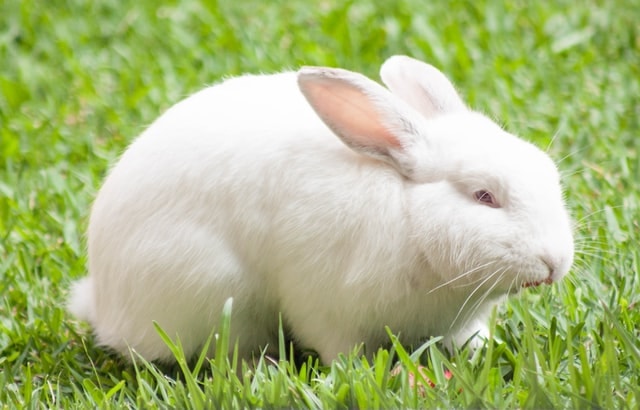
Breeding an Albino Bunny involves genetics, ethical considerations, and unique challenges. Understanding these aspects is key for responsible and successful breeding.
Inheritance of Albinism
Albinism in rabbits is a recessive genetic trait. Both parent rabbits must carry the albino gene for offspring to be albino. If only one parent has the gene, the babies will be carriers but not albino. Breeding two albino rabbits will always produce albino offspring. When breeding a carrier with an albino, there’s a 50% chance of albino babies. Punnett squares can help predict the outcomes of breeding:
- Albino (aa) x Albino (aa) = 100% Albino.
- Carrier (Aa) x Albino (aa) = 50% Albino, 50% Carrier.
- Carrier (Aa) x Carrier (Aa) = 25% Albino, 50% Carrier, 25% Non-albino.
Breeding Ethics
Breeding albino rabbits requires careful consideration of animal welfare. Albinos may face health issues like poor eyesight and increased skin sensitivity, so you should prioritize the health and well-being of both parent rabbits and offspring.
Avoid breeding rabbits with known genetic defects or health problems. Consider the demand for albino rabbits in your area. Breeding without homes for the kits can lead to overcrowding in shelters. Educate potential buyers about the special care needs of albino rabbits, such as protection from sunlight and regular eye check-ups.
Potential Challenges
Breeding albino rabbits can present unique difficulties. Their red eyes may make them more light-sensitive, affecting mating behavior. Albino kits might need extra care due to their light sensitivity. You may need to provide dimmer lighting in their living area. There’s a risk of reduced genetic diversity when breeding albinos. This can lead to health issues in future generations. To avoid this, consider outcrossing with non-albino carriers.
Identifying genuine albinos can be tricky. Some white rabbits with red eyes may not be true albinos. Genetic testing can help confirm albinism. Marketing albino rabbits might be challenging due to misconceptions about their care needs and temperament. Education is key to finding suitable homes.
Albino Bunny: The Significance of Red Eyes
Red eyes in rabbits are often misunderstood. They don’t mean the rabbit is sick or aggressive. Let’s explore what red eyes mean for bunnies.

Myth Busting
Red eyes don’t indicate poor health in rabbits. This is a common myth. Red-eyed bunnies are just as healthy as other rabbits. The red color comes from albinism, a genetic condition. Albinism doesn’t make rabbits weak or sickly. It simply means they lack pigment in their fur, skin, and eyes.
You don’t need to worry if your bunny has red eyes. They’re perfectly normal. Another myth is that red-eyed rabbits have poor vision. This isn’t true. Their eyesight is the same as other rabbits. They may be more sensitive to bright light but see just fine.
Red Eye Appearance
Red eyes in rabbits are due to albinism. The red color isn’t from pigment. It’s from blood vessels showing through the clear iris. Red-eyed rabbits’ eyes may look pink or light red in bright light. In dim light, they might appear darker red or even purple. This is because of how light reflects off the blood vessels.
The red eye trait can occur in any rabbit breed. Some breeds are more likely to have it due to selective breeding. If you’re interested in a red-eyed bunny, ask a breeder about albino varieties in different breeds.
Albino Rabbit Behavior
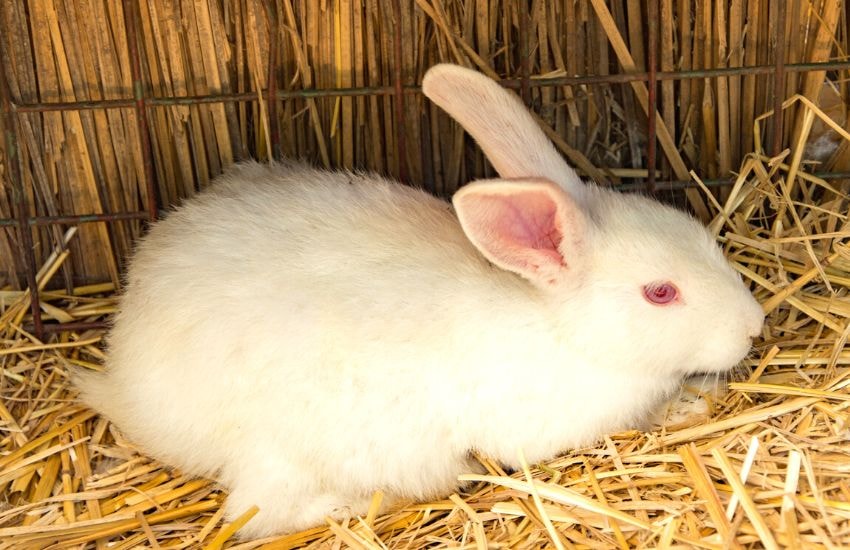
Albino rabbits share many behavioral traits with other rabbit breeds. Their unique physical characteristics can influence some aspects of their behavior and habits.
Typical Rabbit Behaviors
Albino rabbits display common rabbit behaviors. They enjoy hopping, binkying (jumping and twisting in the air), and exploring their surroundings. These bunnies are social animals and often seek attention from their owners. Grooming is an important activity for albino rabbits. They clean themselves regularly and may groom their bonded companions.
This behavior helps maintain their pure white coat. Albino rabbits have an instinct to dig. You might see them scratching at carpets or digging in their litter boxes. Providing appropriate toys and digging areas can satisfy this urge.
Behavioral Adaptations
Due to their sensitive eyes, albino rabbits may be more cautious in bright environments. You might notice them squinting or seeking shaded areas when exposed to strong light. These rabbits may startle more easily than other breeds. Poor eyesight can make them more reactive to sudden movements or loud noises. Creating a calm, predictable environment helps them feel secure.
Albino rabbits often rely more on their other senses to navigate their surroundings. You may observe them using their whiskers and noses to explore objects and spaces more thoroughly. Providing hiding spots and enclosed areas is important for albino rabbits. They appreciate having safe spaces to retreat to when feeling overwhelmed or scared.

Myths and Misconceptions About Albino Bunny
Many false ideas about albino rabbits and bunnies with red eyes still circulate. These myths can lead to misunderstandings about their health, care needs, and behavior.

Common Albino Rabbit Myths
Albino rabbits with red eyes are often thought to have poor health. This is not true. Their red eye color comes from albinism, not illness. They are just as healthy as other rabbits. Some think albino bunnies can’t see well. While they may be more light-sensitive, they are not blind. Their vision is good enough for normal activities.
Another myth says albino rabbits need special food. This is false. They eat the same diet as other rabbits. People sometimes believe albinos are more aggressive. There’s no link between eye color and behavior. Each rabbit has its personality.
Addressing Misinformation
To fight myths, learn the facts about albino rabbits. Red-eyed bunnies don’t need extra care. They have the same needs as other rabbits. Protect albino rabbits from too much sun. Their pale skin burns easily. Use sunscreen or keep them in shaded areas when outside.
Don’t assume all white rabbits with red eyes are albino. Some breeds, like the Himalayan, have this look naturally. Remember, albino rabbits make great pets. They’re as loving and fun as any other rabbit. Judge each bunny on its traits, not on myths about eye color.
Conservation Status and Protective Measures
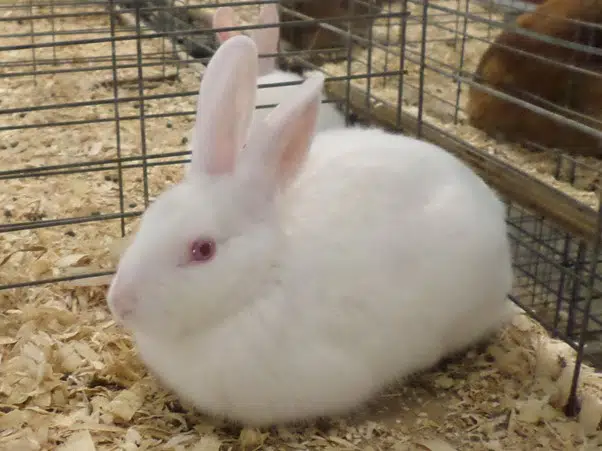
Albino bunnies face unique challenges in the wild. Their white fur and red eyes make them easy targets for predators. This makes the albino bunny quite rare in natural settings. In captivity, the albino bunny needs special care. You should keep the albino bunny indoors to protect its sensitive eyes and skin from harsh sunlight. Provide it with a safe, stress-free environment. To help conserve these unique albino bunnies, you can:
- Support rabbit rescue organizations.
- Choose adoption over buying from breeders.
- Educate others about proper albino rabbit care.
Albino rabbits are not a separate breed. They can appear in many rabbit breeds due to genetic factors. This means specific conservation efforts for “albino rabbits” are limited. If you own an albino rabbit, regular vet check-ups are crucial.
Their red eyes can be prone to issues, so monitoring their eye health is important. You should also protect them from extreme temperatures. Remember, albino rabbits have the same dietary needs as other rabbits. A balanced diet rich in hay and fresh vegetables will help keep them healthy and improve their overall well-being.
Here’s a cute video of an albino rabbit.
By: scorpio18K
Embracing the Unique Charm of Albino Bunnies
Albino bunnies are truly remarkable, captivating animals because of their unique appearance and gentle nature. Their striking red eyes and pure white fur result from a genetic condition known as albinism, which affects pigmentation but not their overall health or behavior. While albino bunnies face specific challenges, such as sensitivity to sunlight and potential vision issues, they thrive with the right care and environment.

Understanding the genetics and special needs of albino bunnies allows us to appreciate them and fully provide the best possible care. By ensuring they have a shaded, safe living space and addressing their dietary and health needs, you can help these beautiful creatures live a happy and healthy life. Whether you’re considering adopting an albino bunny or are intrigued by their unique traits, embracing their care requirements ensures they remain a beloved and cherished part of our lives.
Frequently Asked Questions
How Much Does an Albino Rabbit With Red Eyes Typically Cost?
Albino rabbits with red eyes usually cost between $20 and $50. The price can vary based on the breeder, location, and demand. Some specialty breeders might charge more for rare albino breeds.
Are Rabbits With Red Eyes Considered Dangerous to Humans?
No, rabbits with red eyes are not dangerous. Their eye color doesn’t affect their behavior. These bunnies are as gentle and friendly as rabbits with other eye colors. They make great pets when properly cared for.
What is the Lifespan of an Albino Rabbit With Red Eyes?
An albino rabbit with red eyes typically lives 8 to 12 years. This lifespan is similar to other rabbit breeds. Good care, a proper diet, and regular vet check-ups can help your albino bunny live a long, healthy life.
Connect with Us and Hop Along on Social Media!
Do you have a soft spot for your bunny? So do we at The Rabbit Hop!
Visit us online for:
- Bunny Fun: Enjoy cute videos, discover interesting facts, and get tips for keeping your bunny happy!
- Top Product Reviews: Discover the best products for your fluffy friend.
- Bunny Community: Connect and engage with other bunny enthusiasts just like you.
Follow us on:
Let’s help your bunny be the happiest one in the neighborhood!

